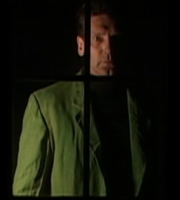
an inland empire analysis
Part
1
WARNINGS
APPROACHING THE FILM
HISTORIES
THE BASICS
IMPORTANT FACES
Part
2
MURDER
AN UNPAID BILL
PURGATORY
Part
3
THE CONNECTION
DREAM ORIGIN
IT TAKES A VILLAGE
ENLIGHTENMENT
Part
4
RABBITS
AXXON N
RED, BLUE, GREEN
AFTER MIDNIGHT
UNSOLVED MYSTERIES
MORAL OF THE STORY
Reference
LYRICS
DELETED SCENES
Discuss
AT XIXAX.COM
Part 2
Murder
Visitor #1: Is there a murder in your film?
Nikki Grace: Ah, no. That's not part of the story.
Visitor #1: No. I think you are wrong about that.
Nikki Grace: No.
Visitor #1: Brutal fucking murder!
There is in fact a murder in real life, and that is the visitor's point. There is also (as the visitor suggests) at the very least an allusion to murder in the film. Take a look at this scene, when Devon and Nikki are reading their parts. Kingsley introduces it:
Well, I thought since we're here and Smithy's set's been started, we might go through some of those scenes that take place there. Not the love scene, of course, but some of the earlier scenes that indicate so beautifully your characters. Let's take, for instance, scene 35—the scene where, Devon, you arrive, Billy, at Smithy's house to find Sue, Nikki, looking out of the window.
Try to picture what's physically going on in this scene.
Devon: I didn't think you'd be here.
Nikki: No, of course you wouldn't. That's because you, uh...
Devon: What?
Nikki: What do you want?
Devon: I said some things, last night, as you know.
Nikki: Yeah.
Devon: And I want to apologize.
Nikki: Apologize?
Devon: Yeah.
Nikki: The things you said weren't the truth?
Devon: I didn't say that.
Nikki: Were they the truth?
Devon: Are you cryin'?
Nikki: Uh huh. Yeah.
Devon: You sorry bout last night?
Nikki: Are you?
Devon: Why you cryin?
Nikki: I'm sorry, Billy. I'm so sorry.
Devon: What?
Nikki: Oh, shit. Look in the other room. [9]
The reading is interrupted rather poignantly here, but we should follow it to its logical conclusion. What Billy sees in the other room is probably Smithy's dead body. Smithy, Sue's husband, was aware of the affair and had threatened Billy's life. [10] Sue apparently decided to take pre-emptive action. In one of the deleted scenes, however, we see Devon's freshly murdered corpse [11] (not Billy, but close enough for our purposes) lying in the street. These are basically two versions of the same murder story. The only difference is whether Smithy gets a chance to kill Billy before he himself is killed. He certainly has the intention.
The most obvious murder, of course, is that of Sue. The details of this murder are obscured by the re-encroaching Nikki Grace fantasy, but I think we can assume that she did indeed die somewhere on the streets of Hollywood or Inland Empire, and that she was indeed killed by Doris Side. [12] We are told that Doris Side is hypnotized by the Phantom, which may or may not be literally true—and we'll discuss the details of that later. For now, let's take a look at the murder on its face, acknowledging that Doris has motive. She totally knows about the affair, and she is possibly aware that Sue is pregnant with Billy's child. (Note how she goes right for the stomach with the screwdriver and brutally grinds it around.) Let's also remember that the affair may have led to Billy's death. Doris would certainly be upset by that.
So let's take score. Smithy (probably) kills Billy for his transgressions. Sue, in revenge, kills Smithy. Doris, for many possible reasons (jealousy, revenge, hypnosis, madness), kills Sue. Three murders. Both cheaters are killed, along with the infertile spouse. We know for sure that two of these deaths happened, but the third (Billy's) is somewhat uncertain.
Okay. Rewind. No, farther back—all the way to Old Poland.
We find the Phantom in Old Poland, but instead of a greasy hypnotizing circus worker, he is a sharply-dressed businessman of some kind. [13] These are two entirely different characters. He is Lost Girl's abusive, overbearing husband, and he fills the role of "the cheated spouse."
Lost Girl is indeed cheating on him—with the Smithy lookalike. Yes, there's Smithy, all clean-cut and friendly-looking. [14] These are very much two different characters, the contemporary Smithy and the Old Poland Smithy. And they should be, because they fill different roles. Putting other characteristics aside, we know that the Old Poland Smithy is fertile (since it's a big deal that his wife is infertile) and that the contemporary Smithy is definitely not fertile. In any case, this Old Poland Smithy plays the role of the lover. We know that this relationship between him and Lost Girl exists mostly from what is established in the penultimate scene of the film when the two embrace. You can also sense this connection from Lost Girl's reactions to seeing him on the TV.
The "Who Is She?" woman with the long hair standing with her back to the camera [15] is most certainly played by Julia Ormond, and thus she is a Doris Side lookalike. She reveals to us in a piece of dialogue, as her husband walks out the door, that she is infertile. This is also the woman we see lying dead on the floor with her insides ripped out. That image, by the way, is intercut with an image of the contemporary Doris Side, and the face is pretty distinctive.
So, the crucial question—who exactly kills whom in Old Poland?
This "mystery" actually unravels straightforwardly in the film. It even happens in chronological order!
For all the evidence you need, see 1:38:00 to 1:42:25. Here's what we are shown:
1
Sue is in a reliving limbo state at the barbecue (one of the clearest cases of that mechanic). Sue sees the ketchup all over Smithy’s t-shirt. This "blood" immediately reminds her of the stabbings—her own and Lost Girl’s.
2
Speaking of Lost Girl’s stabbing, let’s go
there! We see Lost Girl’s face flicker in the ketchup. Then we fully
shift back to Old Poland. Lost Girl is illuminated by candlelight and
says a little prayer as if preparing for something:
“Cast out this wicked dream that has seized my heart.”
3
Lost Girl slowly walks up the stairs, looking unsure of herself, [16] but she goes through with it and actually kills her lover’s wife.
The victim screams as Lost Girl stabs her off-screen.
We hear the screwdriver fall on the floor. Lost Girl kneels down and holds her head in a very clear “what have I done?” pose.
4
Lynch shows us Julia Ormond from behind. [15] “Who is she? Who is she?” Literally asking us to put it together. Then he shows us her face.
5
Lost Girl, now a murderer, briskly walks down
the street and runs across her husband. They have that tense, awkward
conversation, in which they fully acknowledge the awkwardness (which
doesn’t make things less awkward).
“You seem different.”
“You too.”
They are both on edge because they both just killed someone! Lost Girl
is more nervous, because she is more disturbed by what she has just
done.
This escalates into existential horror when
she finds out what her husband has just done. His half-disguised
bragging makes it pretty clear. [17]
And thus Lost girl's horror at what she has done combines with her horror at what her husband has done. [18] That is further compounded by her realization that she has sacrificed part of her own humanity for no purpose.
So Lost Girl killed Smithy's wife out of
jealousy ("this wicked dream that has seized my heart"). And the
Phantom killed Smithy. At the same time.
Watch how Lost Girl responds when he says “you too.” She has this look
on her face like she knows her soul has been severely damaged.
Karolina Gruszka’s acting in this scene is
astounding. In fact, her performance throughout the film is so good
that you can often just get all the information you need by watching
her face.
It's possible that Lost Girl took her own life after these events. She is dead after all, and still young, in her viewing room. It's also possible that the Phantom's abuse went off the rails and resulted in murder, but I'm more compelled by the idea that she was unable to live with herself and committed suicide. These are guesses, but they seem likely.
You've probably noticed by now that the murders in Old Poland and the murders in the contemporary Inland Empire are rather similar. Hopefully you've also noticed that the characters are, too. Here's a chart that describes the parallels:
Repeated
Characters |
|
OLD
POLAND |
INLAND
EMPIRE |
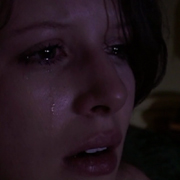 LOST
GIRL LOST
GIRLabused, unfaithful wife (who murders) |
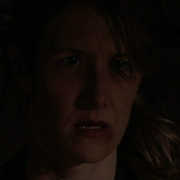 SUE SUEabused, unfaithful wife (who is murdered) |
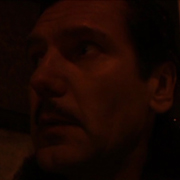 SMITHY
lookalike SMITHY
lookalike tragic lover |
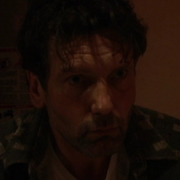 SMITHY SMITHYinfertile spouse (abusive) |
 DORIS
SIDE lookalike DORIS
SIDE lookalike infertile & cheated spouse |
 DORIS
SIDE DORIS
SIDE cheated spouse |
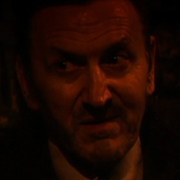 PHANTOM
lookalike PHANTOM
lookalikecheated spouse (abusive) |
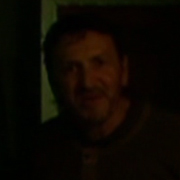 THE
PHANTOM THE
PHANTOM(unique role) |
We have to ask ourselves why the three most important supporting characters make appearances in contemporary Inland Empire and Old Poland. Their faces are repeated, but why do their roles change? And why is each set of characters entangled in a nearly identical tragic love affair? We will explore this later. For now, just remember these parallels.

[9] Nikki reads the scene.

[10]

[11] Devon's corpse from a deleted scene.

[12]

[13]

[14]

[15]

[16]

[17]

[18]
An Unpaid Bill
When we watch INLAND EMPIRE, we should always be looking for the big, obvious clues—especially the ones that seem to come out of nowhere. This is one of them. You may remember talk of an unpaid bill. The first is delivered by Visitor #1:
For instance, if today was tomorrow, you wouldn't even remember that you owed on an unpaid bill. [19]
And the second is delivered by Visitor #2:
I come about an unpaid bill that needs payin'. [20]
So... the obvious question. What is this unpaid bill? What debt has Sue incurred?
You could say that Sue's debt is the murdering of her husband, her infidelity, and the way she lived her life in general. That's valid, but it's not quite enough. I've concluded that the actual unpaid bill—the debt of real consequence—belongs to Lost Girl. Note that self-defense almost legitimizes the murder of Sue's husband, who was abusive and overtly homicidal. Lost Girl, by contrast, killed someone who was innocent, simply for her own desires. This is the debt.
Sue inherits Lost Girl's debt. This is absolutely consequential and will be explained later.
Now it's time to consider how this debt might be repaid. As Visitor #1 says, "actions do have consequences."

[19] Visitor #1.

[20] Visitor #2.
Purgatory
"When I'm at the pearly gates
This'll
be on my videotape."
- Radiohead,
from the song "Videotape."
Finally, we've arrived at the core of the INLAND EMPIRE apple. This is it—where everything begins and ends. Purgatory.
This purgatory is pretty much unlike any other purgatory we've seen in film. It's small, personal, and decidedly non-Satanic. But that doesn't mean it's not a bit hellish. Lost Girl (being now "lost" in purgatory) is compelled to endlessly watch her television. [21] While we may not immediately connect with these images, [22] they appear to be very meaningful to Lost Girl. In fact, she is often moved to tears. [23] Is this some kind of torture? What exactly is it that she's watching? Do the images (which seem to include everything) have something in common? Is it, as we might expect, some kind of post-life review? Yes and no.
Let's take a step back and remember who's watching over this purgatory—the Phantom. To explain the Phantom, we need to take yet another step back.
Sue is visited by Visitor #1—a persistent messenger who quickly turns from polite to merciless. [19] She manages to penetrate the Nikki Grace fantasy and drop a few potent clues, perhaps to inspire an early awakening (which, alas, does not quite happen).
As a side note, when you rewatch this scene (or conjure up your memory of it right now), notice the subtle back-and-forth that you probably missed the first time. Visitor #1 tries again and again to pull a thread of truth from the depths of Sue's hidden memory, but she is met every time by a brick wall of ignorance. Sue does not get it.
In any case, here is Visitor #1's "old tale," which is uncontroversially one of the most important pieces of the INLAND EMPIRE puzzle. It's one of those out-in-the-open Lynch explanations that almost wounds you with its bluntness, which feels rather insulting when you don't get it. Anyone who wants to understand the meaning of the film must explain this. We will deal with the entire passage before the end of this analysis, but for now, we're going to focus on the part that's relevant to the purgatory and the Phantom.
A little boy went out to play. When he opened his door, he saw the world. As he passed through the doorway, a ghost—a reflection—evil—was born. Evil was born and followed the boy . . . And, the variation. A little girl went out to play. Lost in the marketplace as if half-born. Then, not through the marketplace—you see that, don't you?—but through the alley behind the marketplace. This is the way to the palace. But... it isn't something you remember.
We must first recognize that the "old tale" defines characters that actually exist. Who, then, is "a ghost—a reflection—evil?" The best candidate—for reasons described here and elsewhere—is the Phantom. So how does that define the Phantom?
The concept of reflected evil is central to INLAND EMPIRE. Evil seems to bounce like refracted light among all the various characters. Deception, jealousy, reckless violence, and general darkness—it all spreads. They reflect evil onto each other, and the Phantom is basically a reflection of all this evil. In other words, he is evil only as a result of his reflective properties. This evil is created by the other characters themselves. For example, when the Phantom hypnotizes Julia Side, [24] that is symbolic for Julia Side being hypnotized by her own inner evil.
It's also clear that the Phantom is (as Visitor #1 calls him) a "ghost." The Phantom interacts with Sue on an unearthly plane on at least two occasions, and his hypnotizing certainly has a paranormal quality. Especially in his capacity as gatekeeper of the purgatory, [25] the Phantom behaves supernaturally. We know that the purgatory does not literally exist on earth, that Lost Girl is dead when she is confined within it, and that Sue is dead when she arrives there. [26, 27] It only follows that, in a purely supernatural setting, the Phantom is supernatural.
When the visitor defined the Phantom as reflected evil, she was setting up an actual event in the film which arrives at a climax. Indeed, when Sue confronts the Phantom outside room 47, we actually get to see her own evil reflected—and defeated.
When Sue shoots the Phantom, he first seems unaffected. A beam of blinding white light hits him in the face, [28] and he appears to be incapacitated by it—dumbstruck and overwhelmed, perhaps, by the blast of holy energy which seems to have originated from Sue, her special phantom-killing gun, or both. Then, something happens—something which, like the many other sore-thumb clues in INLAND EMPIRE, must be reconciled. The Phantom's face transforms into a grotesque version of Sue's face—a reflection of her evil [29]—which she then heroically terminates. [30]
In fact, we have enough evidence to call this Sue's clown face of negativity. What am I talking about? Well, check out this Lynch quote about overcoming negativity with meditation:
I call that depression and anger the Suffocating Rubber Clown Suit of Negativity. It's suffocating, and that rubber stinks. But once you start meditating and diving within, the clown suit starts to dissolve. You finally realize how putrid was the stink when it starts to go. Then, when it dissolves, you have freedom.
Lynch actually shows us Sue's scary clown face earlier in the film, when Sue runs at the camera in full homicidal "I'm killing my husband" mode. [31] That is immediately preceded by—you guessed it—a clown face, [32] which actually fades into the running at the camera scene. This could not be more obvious.
The whole point of the purgatory, as you may have guessed by now, is to explore and defeat one's own evil and negativity. It is a place of spiritual cleansing. In fact, this is the dictionary definition of a purgatory—a place where evil is purged. Some purgatories (like the Catholic version) involve a significant dose of punishment, but Lynch's purgatory is pretty much all about the cleansing. This is where the bill is paid—where the debt is reconciled.
Also note that there is no visible deity or supernatural force doing the purging. It is an entirely introspective process. One could argue the Phantom has a role in the actual spiritual mechanics of the thing, but that view is not supported by the film. I believe it's reasonable to conclude that the Phantom is more of a natural force (reflecting evil, as he does) than a sentient captor with actual motive and self-determination. It is probably Lost Girl who imprisons herself.
The obvious point here is that Sue defeats her own evil to free Lost Girl. But wait—how does that work? How does Sue have the power to free Lost Girl? If it's just Sue who is participating in this particular episode of soul-cleansing, how does Lost Girl get "credit" (as it were) for what Sue does? If they are two separate beings, how does that make any sense? Well, I will argue that they are not so separate after all.
NEXT: Part 3

[21] Lost Girl in her purgatory.

[22]

[23]

[19] Visitor #1.

[24] The Phantom hypnotizes Julia Side.

[25] The Phantom guards the purgatory.

[26] Sue discovers Room 47.
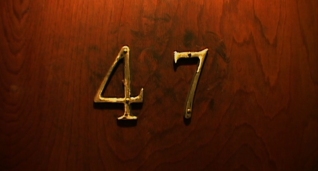
[27]

[28]

[29] Reflected evil.

[30] Reflected evil defeated.


[31] Sue's clown face. (Compare to 29.)

[32] A clown face, juxtaposed with Sue's.